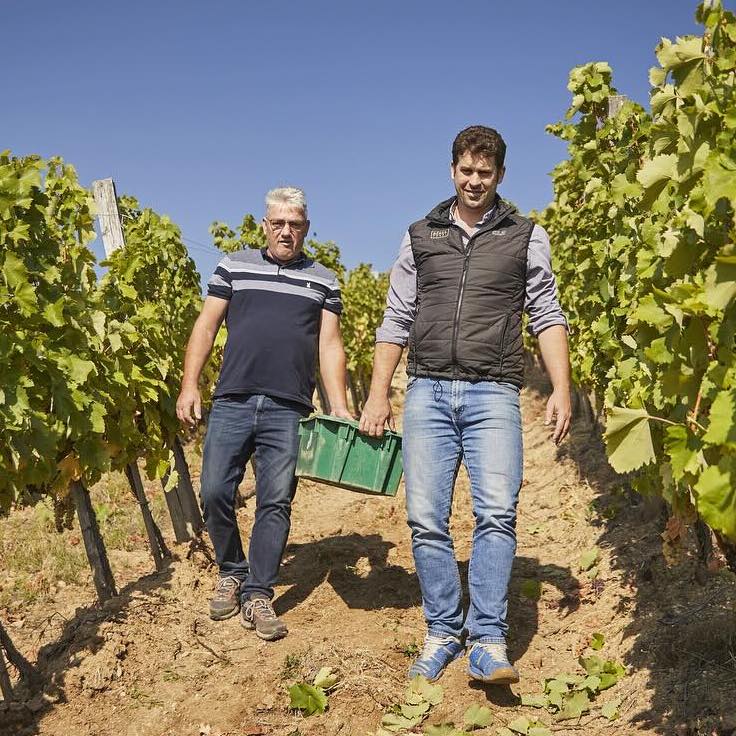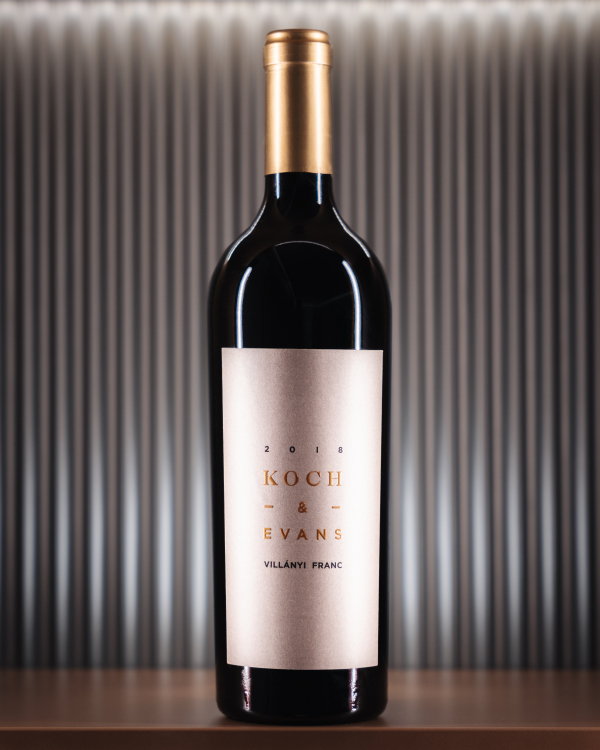Amazing Kadarka from the highest vineyard of Hungary
Gróf Buttler Kadarka Superior from Nagy-Eged mountain
Hungary is not a mountainous country, thus our highest spots are not so high like for example in Switzerland or Argentina, but still there are some peaks we might talk about. Mátra wine region has some higher altitude vineyards, but Eger wine region is the record keeper with its Nagy-Eged mountain.
Unique soil and mesoclimate
Nagy-Eged is part of Bükk mountain, it is 536 meters high. It’s within easy reach from the town of Eger, thus a popular hiking route with the national „Red Route” crossing it. Its diverse flora and fauna makes it even more attractive, and also ideal for kite riders. But for us its most remarkable because of its unique climate and soil, which makes Nagy-Eged the „grand cru” of Eger and has the capacity to give wines classified Grand Superior.
The soil is grey limestone despite of riolit tufa of the rest of Eger wine region. Rendzina soil and brown forest soil is also typical. As for the climate: the heat of the Great Plain meets the coolness of Bükk mountains here, and it results a mesoclimate with early spring and a large number of sunny, hot days (more than 100 days with a temperature of 25 Celsius). Annual rainfall is 540–550 mm. Southern slopes of 20–35% steepness. (Rendsina soils are humus-rich shallow soils that are usually formed from carbonate– or occasionally sulfate-rich parent material. Rendzina soils are often found in karst and mountainous regions. The term rendzina originated from an old Polish word “rzędzić”, which means “to chatter”. Soils of this type contain a significant amount of gravel and stones, which, during ploughing, produce various sound effects (clicking, screeching, etc.), i.e., “talk” to the ploughman.)
Devasteted, now thriving
The emblematic mountain has a 1000 year old history of grape growing, since our first king, Saint Stephen brought cistercian monks here who grew grapes on the mountain. The first written evidence is from the 13th century, and the golden age must have been in the 18th century, when Nagy-Eged was famous for its outstanding wines. Then unfortunately phylloxera destroyed all the vineyards of the mountain. A small replanting took place in the 1950s, but soon the new vineyards were abandoned, because the mass production concept of the communist era did not find them economical.
When the wine renessaince took place in the 1990s, Nagy-Eged could hope in the revival. Finally Gróf Buttler Winery took the efforts to first replant vines on Nagy-Eged. The 18 hectares were replanted in 2003. Later, in 2005 Kovács Nimród Winery also planted 10 hectares for their best wines, and then St Andrea Vineyard 4 hectares.
Botrytised red wine? Yes!
Kadarka is still mostly known as an every day, light bodied, easy drinking wine with not much potential. It is really hard to cultivate Kadarka. Late ripening, sensitive, its thin skin can be affected with harmful and noble rot. The colour is medium deep ruby. On the nose rich, spicy and elegant – if in good hands. On the palate juicy, spicy, medium bodied with good acidity and low tannins. Usually consumed young, within 1–3 years, but with properly restricted yield and careful vinification Kadarka can be aged for a long time – as it is proved by some vertical tastings carried on in Szekszárd and other wine regions.
Gróf Buttler Nagy-Eged Kadarka Superior is one of the best examples, and now its new vintage is available! The 2014 is extremely intense and rich on the nose, in which we meet the character of botrytis (as Tokaji Aszú or Szamorodni). Rich in sweet spices, sweet, fully ripe red and forest fruits. Concentrated, deep, complex, full bodied wine, where the crisp acids give liveliness. Has a long ageing potential.
A mastreclass with the „three men of the mountain”
The first masterclass with the three Nagy-Eged producers took place last year, and now the second edition is coming closer. Nagy-Eged Masterclass 2.0 will b held on 26 October in Budapest, Kogart house. The event will start with a discussion, then will be followed by the tasting of 12 exclusive wines of the three wineries of Nagy-Eged mountain: Gróf Buttler Winery, Kovács Nimród Winery and St Andrea Vineyard. The discussion will be lead by wine writer Norbert Izsák. The event is from 18.0 until 22.00, it ends with a light finger food dinner and retasting of the samples. The tickets cost 16 900 HUF (55 euros) and pre-registration is needed. The masterclass is held in Hungarian, but in case an English speaker is interested, we are sure the translation will somehow be solved – and the wines will speak themselves. The above mentioned Gróf Buttler Superior Kadarka is included in the wine list.
Wine list and form to register (név=name):
https://kovacsnimrodwinery.hu/hu/nagy-eged-hegy-mesterkurzus-2-0/
If you need help, write to us: info@hungarianwines.eu
More about Kadarka Grape (from our Grape Dictionary)
Regions: Kadarka is grown almost all over the country. It has significant vineyards in the Great Hungarian Plain, where Kunság, Csongrád and Hajós–Baja wine regions are situated. Kadarka is most important in Szekszárd and Eger, the two wine regions where the famous blend, Bikavér (Bull’s Blood) is made, and Kadarka is usually one component of the blend. Total plantings of Kadarka account for less than 700 hectares.
Story: “Kadarka is said to have been introduced to Hungary from the Balkans, either by Serbians, which fits with Kadarka being the Slavic name for Scutari, a lake (also known as Skadar) between Montenegro and Albania, and with the fact that the variety was once cultivated under the synonym Skadarka in Croatia and Serbia (Levadoux 1956; Galet 2000; Rohály et al. 2003), or by Turks, hence its synonym Törökszőlő (‘Turkish grape’). It is conceivable that it made its way to Hungary via Bulgaria, where it is still widely planted under the synonym Gamza, and where it is considered to be indigenous. It is also said to be “be indigenous to the region of Miniş near Arad in western Romania, where the first sweet Aszú-style red wine was made from shrivelled Cadarcă grapes in 1744 (Dejeu 2004). The exact origin of Kadarka remains unknown but it lies somewhere within the Balkan-Pannonian area.” Excerpt From: Robinson, Jancis; Harding, Julia; Vouillamoz, Jose. “Wine Grapes (9780062325518).” iBooks.
Comments ( 34 )
-
Trackback: ป้ายโฆษณา
-
Trackback: magic mushroom dispensary denver
-
Trackback: ks pod
-
Trackback: music
-
Trackback: จุดเด่นของ slot demo 2023 LSM99
-
Trackback: วิเคราะห์บอลวันนี้
-
Trackback: ราคาบอลวันนี้
-
Trackback: 웹툰 다시보기
-
Trackback: personalized cornhole wraps with logo
-
Trackback: super kaya88
-
Trackback: สล็อตออนไลน์
-
Trackback: casino
-
Trackback: ks lumina pod
-
Trackback: link alternatif superkaya88
-
Trackback: ประตูสำเร็จรูป
-
Trackback: สูตรสล็อต pg ใช้ได้จริง 2024
-
Trackback: is wholecelium legit
-
Trackback: เพิ่มติดตาม
-
Trackback: pod
-
Trackback: edible mushroom journal articles
-
Trackback: mystic stores near me that sell crystals
-
Trackback: som777
-
Trackback: ยาเพิ่มขนาดชาย
-
Trackback: ที่พักพูลวิลล่าพัทยา
-
Trackback: Dryer Vent Cleaning in West Lake Hills
-
Trackback: pglike
-
Trackback: i loved this
-
Trackback: นำเข้าสินค้าจากจีน
-
Trackback: หวยมาเลย์ lsm99 ออกรางวัลกี่โมง
-
Trackback: 3플3
-
Trackback: รับสร้างบ้านเชียงใหม่
-
Trackback: รักษาสิว
-
Trackback: ต่อผมแท้
Comments are closed.







Trackback: Henry lever action rifles